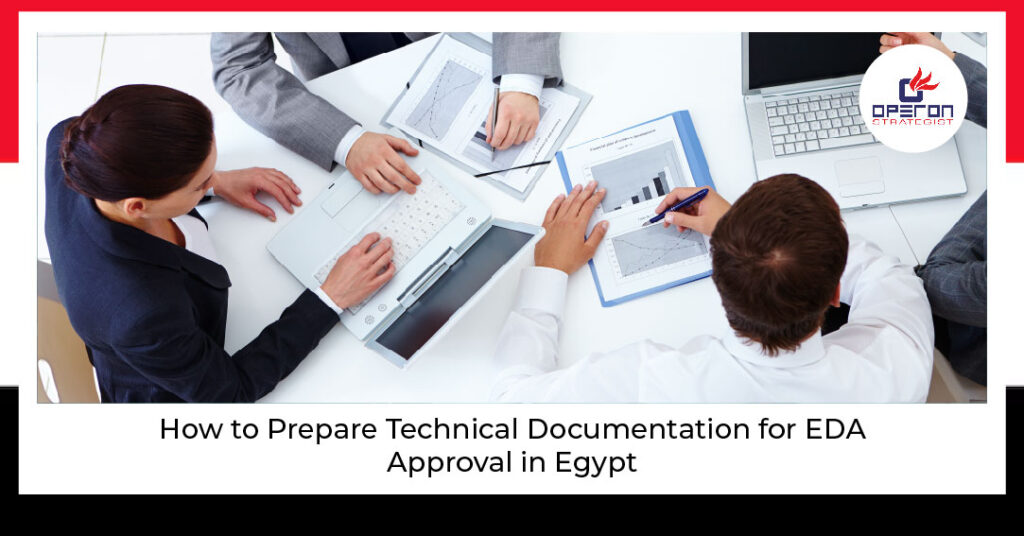Entering the Egyptian medical device market requires securing EDA approval, a mandatory regulatory step governed by the Egyptian Drug Authority (EDA). A crucial part of this process involves the preparation of comprehensive and compliant technical documentation that aligns with EDA requirements. Accurate and complete documentation is essential for achieving EDA approval, facilitating market entry, and ensuring post-market surveillance readiness.
This article outlines the essential technical documentation structure, mandatory content, and proven strategies to support a smooth and efficient EDA approval process in Egypt
Let's Grow Your Business Together
Why Technical Documentation Is Crucial for EDA Approval?
The EDA medical device approval process is designed to safeguard patient health and ensure product reliability. Technical documentation acts as verifiable proof that a device complies with both international safety benchmarks and Egypt-specific regulations.
Without comprehensive and EDA-compliant documentation, applications risk rejection or extended approval timelines, delaying market entry.
Need EDA Approval Support? Contact Operon Strategist!
Essential Components of Technical Documentation for EDA Approval
A structured technical file is critical for obtaining EDA approval for medical devices. The following key components must be included to meet regulatory expectations:
Device Description and Intended Use
- Device classification in accordance with EDA categories.
- Description of intended medical purpose and clinical application.
- Product models, variants, and system configurations.
Design and Manufacturing Information
- Technical drawings, specifications, and schematics.
- Manufacturing process details and plant certification such as ISO 13485 or ISO 15378 for packaging.
Risk Management File
- Complete risk analysis aligned with ISO 14971.
- Hazard identification and mitigation strategies.
- Benefit-risk analysis and residual risk evaluation.
Product Verification and Validation Data
- Results from performance, biocompatibility, and sterility testing.
- Software validation for devices incorporating digital elements.
Clinical Evaluation Report
- Literature-based evidence and clinical investigation results.
- Demonstration of product safety and clinical performance.
Labelling and Instructions for Use (IFU)
- Labels and IFUs compliant with EDA’s format, including Arabic translation.
- Unique Device Identification (UDI) where applicable.
Post-Market Surveillance Plan
- Procedures for complaint handling and incident reporting.
- Corrective and Preventive Actions (CAPA) framework.
- Field safety corrective action protocols.
Egypt-Specific Requirements for EDA Approval
While Egypt’s regulatory framework aligns broadly with international standards like MDR and GHTF guidelines, specific local regulations must be addressed for EDA approval:
- Labelling and instructions must be available in Arabic.
- All testing must comply with EDA-approved standards.
- Certain high-risk devices may require local clinical evaluation.
An authorized local agent must manage the application and post-market responsibilities.
Common Documentation Errors Affecting EDA Approval
Several issues frequently cause delays or denials in the EDA approval process:
- Missing or incomplete technical documentation.
- Misalignment with EDA-specific regulatory expectations.
- Insufficient clinical and performance data for higher-risk devices.
- Non-compliance with local labelling and language requirements.
Proactively addressing these concerns ensures a smoother and faster approval timeline.
Operon Strategist’s Expertise in EDA Approval
Operon Strategist specializes in regulatory consulting and technical documentation services for achieving EDA approval. Support services include:
- Preparing and reviewing technical documentation aligned with EDA requirements
- Developing risk management files and clinical evaluation reports
- Conducting submission audits and regulatory gap analyses
- Coordinating with accredited laboratories for product testing
Our Worldwide Services –
- EDA Registration
- FDA 510k
- CDSCO Registration
- CE Marking
SFDA - Turnkey Service
- Manufacturing Services
- Quality Management System
- ISO 13485
Expert regulatory assistance from Operon Strategist reduces risk, improves approval timelines, and ensures full EDA regulatory conformity.

